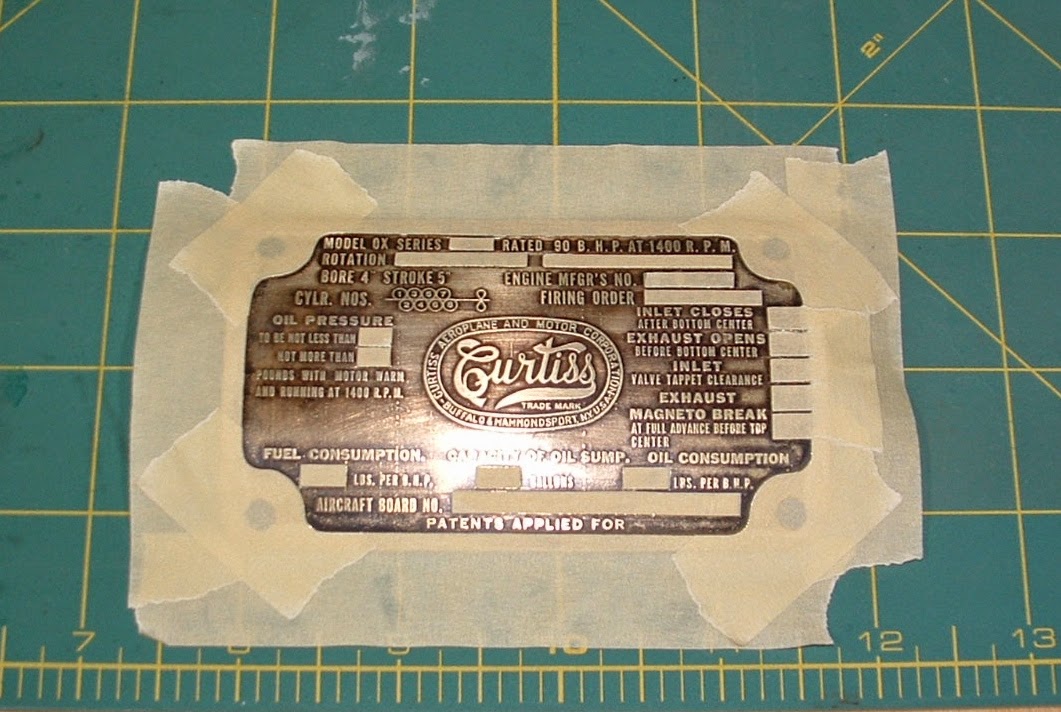Most tags are embossed, or have raised lettering. The background is painted a color with the paint removed from the top surfaces of all the lettering. Debossed, or engraved lettering can be done too - I'll address that later.

Here's the tag as removed from my engine. Although worn away, the background is filled with black paint.
I start by polishing the borders, top of the lettering, and stamping pads. This makes final clean-up easier and decreases the risk of rubbing through the paint.
I then put masking tape around the border and the stamp pads. This makes it easier to remove the paint, and keeps the paint out of the stampings which would be difficult to remove and maintains an original look.
Time for paint - a couple of light coats is best. I sprayed this one with flat black, which tends to dry a little quicker.

Here it is with the masking tape removed and ready for the lettering to be cleaned up.
Over the years, I've tried lots of different ways to clean up the lettering. What I've found that works best for me is to use a new, sharp razor blade.
Run the blade at about a 45 degree angle over the top the lettering, slowly scraping away the paint. The angle is important so the blade does not drop in between the letters and remove paint where you don't want it removed. Go slow, and you'll see the shiny brass on the top of the lettering magically appear.
 Once all the required paint is removed, I use some mild rubbing compound to re-polish the surfaces and this also removes any paint I may have missed.
Once all the required paint is removed, I use some mild rubbing compound to re-polish the surfaces and this also removes any paint I may have missed.I then clear coat the whole tag to seal both the paint and polished metal surfaces. The whole process taking less than an hour.
Voila - a beautiful tag!

Here is the airframe tag and fuel gauge dial that I had previously performed the same process on.
If the tag is debossed, I like to fill the sunken lettering with an acrylic, water-based paint. Once filled and slightly dried, you can take a damp rag and remove any unwanted paint from the upper surfaces, clear-coat if wanted, and you'll have a great looking tag, control knob or whatever.
The tachometer dial that I restored had debossed lettering. That is the process I used on it.
Stay tuned for another post soon on the leading edge - just about finished.












